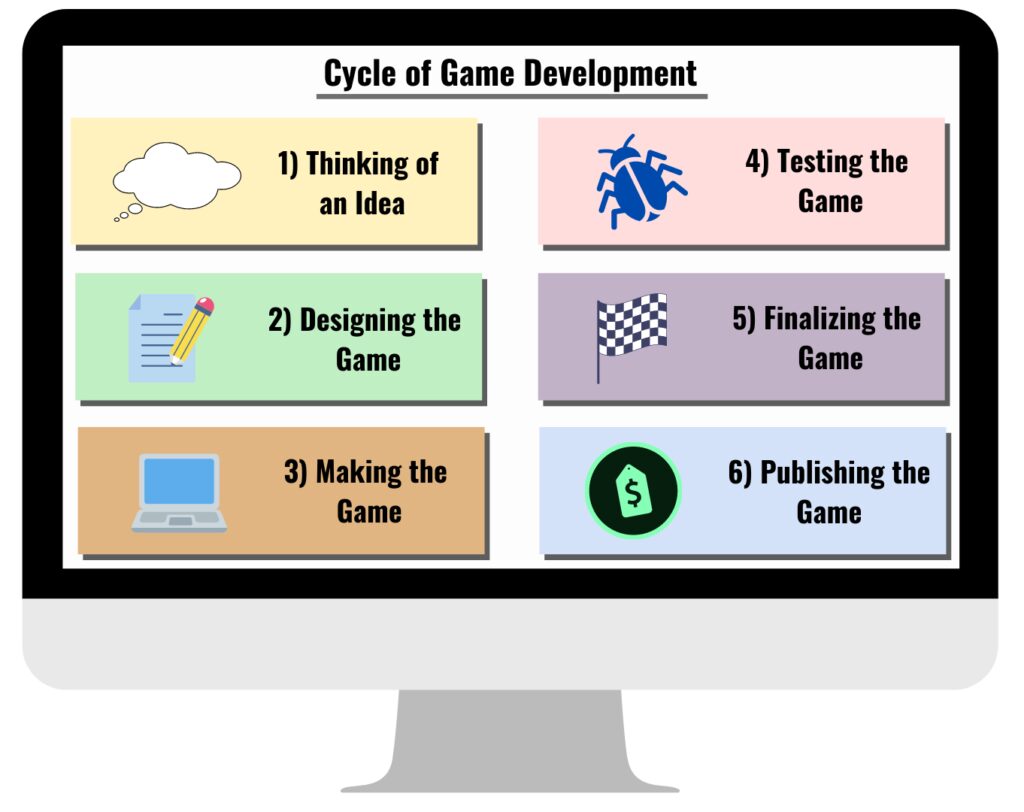Game development involves creating a video game, which requires game design knowledge. The process begins with conceptualization, which involves brainstorming with a team or independently creating an idea for the game. The next step is to create the storyline, followed by designing the game world, and then developing the game through programming and creating the artwork and sound effects. Testing is crucial to ensure that the game works well and is engaging. Finally, finalizing the game and launching it involves creating the packaging, marketing the game, and making it available to players. To be successful, game developers must have a deep understanding of game design principles and technical skills.
Game Design 101: From Concept to Creation, Understanding the Basics of Game Development
Game development is the process of creating a video game. There are many different types of video games, from puzzle games to first-person shooters to role-playing games. Each game has its own unique set of challenges and requirements, but all require a certain level of game design knowledge.
Conceptualizing the Game
The first step in game development is coming up with a concept for the game. This can involve brainstorming with a team of developers or simply coming up with an idea on your own. The key is to have a clear idea of what type of game you want to create and what the main objective of the game will be.
Creating the Storyline
Once you have a concept for the game, the next step is to create a storyline. This involves writing a script for the game that includes the background of the game, the characters, and the main objectives. The storyline can be influenced by many different factors, including the game’s genre, target audience, and level of realism.
Designing the Game World
The next step in game development is designing the game world. This involves creating a virtual environment in which the game will take place. The game world can include landscapes, buildings, vehicles, and other objects. Designing the game world requires a combination of technical and artistic skills, and can involve working with 3D modeling software.
Developing the Game
Once you have a concept for the game and have designed the game world, the next step is to develop the game itself. This involves programming the game, creating the artwork and sound effects, and testing the game to ensure that it is fun and engaging.
Programming the Game
Programming the game involves writing code that defines the behavior of the game. This code can include logic for the game’s physics, artificial intelligence, user interface, and other features. Programming a game requires a deep understanding of programming languages like C++ or Java.
Creating the Artwork and Sound Effects
Creating the artwork and sound effects for a game involves designing the graphics and sounds that will be used in the game. This can include designing characters, environments, and objects. It can also involve creating music and sound effects that will be used throughout the game. Artwork and sound effects are crucial to creating an immersive gaming experience.
Testing the Game
Testing the game involves playing the game to ensure that it works properly and is fun to play. This involves finding and fixing bugs, adjusting game mechanics, and making sure that the game is balanced and challenging. Testing is an ongoing process that continues throughout the development phase of the game.
Finalizing the Game and Launching it
Once the game has been developed and tested, the final step is to finalize the game and launch it. This involves creating the packaging for the game, marketing the game to potential players, and releasing the game.
Creating the Packaging
Creating the packaging for a game involves designing and printing the physical media that the game will be sold on. This can include DVDs, game cartridges, or digital downloads. The packaging should be visually appealing and include information about the game’s features and requirements.
Marketing the Game
Marketing a game involves promoting the game to potential players. This can involve creating trailers or demos of the game, advertising the game on social media or other online platforms, and reaching out to gaming journalists for press coverage. Good marketing can help ensure that the game is successful.
Launching the Game
Launching a game involves making the game available to players. This can involve releasing the game for sale on digital marketplaces like Steam or the App Store, or making physical copies of the game available for purchase. Once the game is released, it is important to continue supporting the game with updates and bug fixes to keep players engaged.
Conclusion
Game development is a complex and challenging process that involves many different skills and disciplines. From coming up with a concept for the game to creating the package and launching it to the world, the game development process requires a deep understanding of game design principles and technical skills. By following these basic steps, anyone can create a game that is fun, engaging, and successful.
